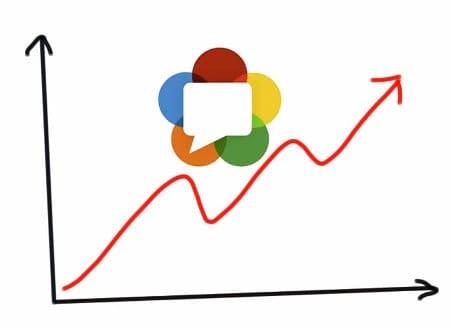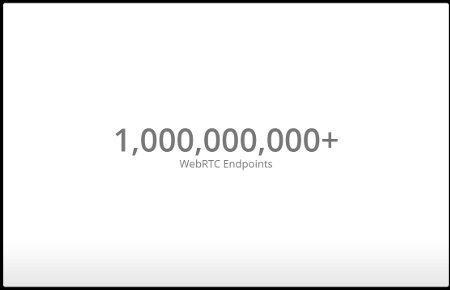Now that we’re getting to the billion devices milestone for WebRTC, it is time to think where the next billion will come from.

Last week was Google I/O, and I was on vacation. Someone needs to synchronize Google’s events with my calendar a bit better.
One of the interesting things that came out of it is Justin Uberti’s presentation that got a lot of attention on a GigaOm post by Janko Roettgers. The title? “WebRTC is growing fast: soon to surpass one billion devices”
Here’s the culprit slide:

Not that hard if you are Google and along with Mozilla you just happen to own 50% of the browser market. Oh – and you have a few phones out there too, with that little green robot on them.
I am not trying to downplay this one – I just think that Janko went for a headline but not for any real news, which is fine.
It did get me thinking though – now that we are reaching a billion WebRTC enabled “devices” – where will the next billion come from?
The answer to this question, as anything else these days comes from mobile. While WebRTC hasn’t been that strong on mobile, this is changing and will rapidly look different in the coming months.
Assuming Apple doesn’t change their stance (and they won’t in 2013), then we are left with other mobile players to make their moves. Who do we have as meaningful players?
- Microsoft with Windows Phone – unlikely to do anything interesting with WebRTC
- Blackberry 10 – there’s already a ported WebRTC SDK curtsey of Hookflash
- Google with Android – expect WebRTC there later this year in one form or another (they already have it in Chrome Beta for Android)
- Mozilla with Firefox OS – where everything is HTML5 anyway
As we are looking for the “next” billion, it is probably also safe to assume it will come from featurephone replacements in emerging markets – places where the key players at the moment are thought to be Android and Firefox OS. The reasons? The base of competition there is low cost smartphones – something in the $50-$100 price range. And since both of these operating systems are suitable for that price range, and both the main proponents of WebRTC browsers anyway…
And there you have it. WebRTC becomes available in over 1 billion devices, creating a huge marketplace – bigger than Apple’s App Store or Facebook when it comes to developers looking for a place for their service (be it a web site, an app or whatnot).
This achievement reached while sidestepping Microsoft AND Apple. Somehow, I don’t see either of them doing anything strategic in this space: Microsoft’s delay tactics and Skype plugin isn’t helpful and Apple’s silence isn’t leading it anywhere.
–
And if we are counting by the billion, here’s the best show in town: Hans Rosling at TED categorizing the world population by the billions:
[ted id=912]

How do you find these things? Amazing to see world class story telling.
You are too kind. I usually find myself thinking on post ideas when I walk, jog or swim (which now happens 3 times a week).
Tsahi — But will those next billion devices be true WebRTC clients, or will we see mobile devices adopting the RTCWeb media protocol stack, but with native OS APIs? In other words, offering native apps the opportunity to plug in real-time communications as part of the user experience, to offer voice and video as a feature?
Robert,
These are good questions. My own view is that both options are valid and it really depends on the use case.
As today’s mobile consumption is focused on apps, WebRTC provides the means to build the app with multiple SDKs available already (a post on that is scheduled for next week). The other option of native browser support is trickier to achieve, but might not really be that interesting to most.
Nice Talk Talk find. Interesting to think of WebRTC’s not as a the latest in high-tech for bleeding edge communication services/apps, but as a potential basis for truly democratizing real time comms for the majority of the world’s population.
Yap.
I think WebRTC has sidestepped this whole issue of adoption and maturity and jumped right into the status of ubiquitous solution – and that in 2 years time only.